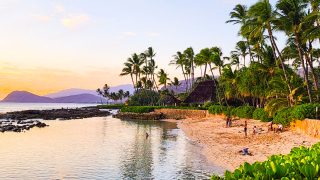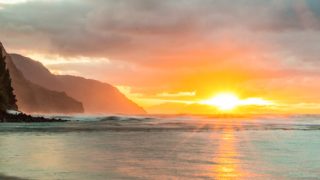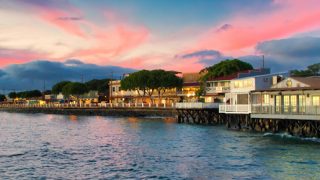The record influx of visitors in Hawaii is something to behold. For those of us here, we went from almost no tourism to the verge of breaking records in about four months.
Changes are coming, and with those, a Hawaii vacation could have additional costs and require more planning as new measures are implemented.
Visitor impact fees.
On Maui, for example, the county council may consider the idea of visitor impact fees. While not new globally, these could be a first for Hawaii. Shane Sinenci of east Maui is spearheading the concept. He wants to see an extra fee added to every airline ticket to Maui. He said, “Places like the Galapagos, it’s expensive to get there. Galapagos, you would have to pay an extra $100 for impact fees if you’re visiting the Galapagos.”
How would this help control the volume of tourism? He said his goal is to create a higher level of respect for the islands, although how fees would accomplish that goal also isn’t clear. Would returning residents of Maui be exempt from any fee? And is that legal, and how would it be enforced? You can’t expect the airlines to determine who is visiting and who lives on the island.
Traffic mitigation, fines and surcharges.
Maui Mayor Victorino also addressed tourism issues this week, and specifically, the traffic on the Hana Highway, where up to 600 people a day drive that small winding road.
The mayor said that traffic congestion is a serious problem that’s preventing police access on the island. He said that “a choice must be made between enforcing parking violations or responding to the thousands of calls that MPD receives each week. I’m sure our citizens agree that enforcing crime is a higher priority than parking violations, but we are working toward other solutions.”
New Hana Highway warning signs.
Recently, the Hana Highway has had 70 new parking enforcement signs installed in conjunction with the state. They warn of both a $35 fine for parking in a no-parking zone and an additional $200 surcharge for illegally stopping on a state highway. Signs notwithstanding, the mayor indicated that the police issued nearly 500 parking citations and warnings so far in June along the Hana Highway.
Other mitigation efforts apparently include the county working with airlines to reduce flights into Maui voluntarily. Also, the mayor plans to work via accommodation providers and car rental companies to help visitors better coordinate travel on-island. Maui is also in the process of creating paid parking locations along the Hana Highway.
Other Examples Where Visitor Conservation and Impact Fees Apply:
Kauai – Access beyond Hanalei to Haena State Park and Kee Beach requires advance reservations and sells out normally 30 days in advance. This controls the number of cars and people daily. While the fee is nominal ($10 per car and $5 for each person without), the system works by limiting cars and traffic. Today, the state DLNR announced a community-based manager to oversee Haena State Park, which will manage the reservation system, entry and parking fees, and a shuttle bus service. A focus will be on the cultural aspects of the park.
Big Island and Maui – Volcanos National Park and Haleakala National Park – Fees have increased to $30 a car and $15 for pedestrians.
Oahu – Hanauma Bay Nature Preserve – The entry fee has increased to $12.
HTA stated that “Hawaii’s unspoiled natural beauty is the foundation of Hawaii’s tourism product.” Fees are likely to be subject to significant increases ahead.
Hana Highway: why it’s so popular.
A top favorite on Maui and statewide, this is one of the great road trips globally, not just in Hawaii. The 65 mile-long drive takes you from Kahului to Hana town in east Maui. This is not a road to be rushed, and the time to cover the distance is longer than expected. The road is narrow and winding, with some 59 bridges, of which most are one-way. Many of the bridges are over 100 years old.
Along the way, you are greeted with waterfalls and unparalleled views of the Maui coastline and rainforest.
There are many stops possible along the way. The first stop might be Paia town, where you’ll have plenty of chances to refill both your trip supplies and the gas tank. Nearby you’ll find epic windsurfing at Hookipa Beach Park, another favorite stop along the way before getting serious.
Hana town is a step back in time, and if you continue even further, you’ll be greeted with even more fabulous views and beaches.
What’s your reaction to fees and other changes ahead?







Everyone needs to realize that everything has changed since Covid. The ability to work from any location will put incredible pressure on the places that were typically only visited (on Vacation). Every beautiful and remote and sacred destination will be basically be overrun by the masses of the world as they will be able to earn a living anywhere there is an internet connection. Quick and drastic measures will be the only way to save places like the islands from becoming a distant memory of there former beauty and seclusion. Fees might have worked in the past but this new era will demand drastic and quick action to slow down or stall the coming Tsunami of people and the trash and overt exploitation of natural resources that follow. It is incredibly sad that this pandemic has harmed so many and yet still will negatively impact people and place long after it has ended. Do something now while there is still a chance and do it for all islands. Please save them while you can. Thanks
We are regular visitors to Maui. We drove Hana Hwy again his spring (April, 2021). The only answer to protecting the flora and the traveler is regulation. At one point, 2 vehicles had parked just off a single-lane bridge, blocking the roadway. The owners were among the crowd clustered on the bridge taking pictures or gawking at the waterfall. Traffic was stopped on either side, and tempers were high. The LAST way you want to drive Hana is when you’re angry. As much as I hate to say it (because it will eventually affect me) is that to protect the beauty of the Island, there must be fees, controls and high-cost consequences for breaking laws.
I see where the added fees are thought to slow down the tourism, but it’s mostly people with means that can pay now for traveling to Hawaii. And I don’t feel that it will slow that down any. And someone once commented on your post that some of those with means expect to be waited on and picked up after (meaning not picking up their own trash). So what good will that do? My husband and I have camped for many years and have always left our sites cleaner than when we found them. We have taught our kids the same. Respect the places you visit so that when you come back, they will still be there and still be clean. We are not “of means” so when we get to Hawaii, we save for years to be able to visit. The added fees may make it impossible for us to ever come again as we are getting up there in age and on a fixed income. I understand the issues Hawaii is having with tourism and wish for everyones’ sake there was an easy answer but I don’t feel that extra fees are the answer. Limiting flights may help though! Mahalo for listening to my opinion.
Hi Pam.
Thank you. We hope you can still return, and the value paradigm in Hawaii travel is definitely not going away.
Aloha.
Don’t mean to throw any cold water on the “rich people are the problem” but even IF the federal government were to limit the number of flights, the airfare on those flights will go up. Way up. So if you want to ensure that only the “well to do” will travel to Hawaii, cutting back on supply while demand is surging is a great way to make that happen.
And, perhaps my life experience is difference, but I’ve seen plenty of “poor” people trash their campsites. Do rich people camp these days? And I don’t mean “glamping”
I can imagine the negative impact this will have on people of color who statically survive at lower income levels. They will be economically excluded from enjoying the natural beauty Hawaii has to offer.
This will only benefit the rich and while excluding the economically disadvantaged.
Seriously, you had to play the race card? People of color that are poor probably never went to Hawaii before! It’s always been a pricy vacation! Stop with your hatred of white people!! I’m not rich but I can afford vacations because I worked all my adult life!!!
I don’t think Maui leadership is thinking this through from all sides. You are essentially trapping the residents of Maui in with the portion of visitors that lack tribal and cultural ancestry. Maui is one of the last civilized places governed by a sacred reverence for the land and a respect for the values of Ohana, Aloha, Ha`aha`a, Ho`omau, to name a few. Instead – the audience that will be left to afford Maui is the one that sees things as replaceable and able to be bought.
With unrooted high Impact fees, you might be converting this land rich in ancestry – a tribal land – into a rich people’s playground. Pricing out other tribal people and making Maui inaccessible with high impact fees seems to make you guilty of a similar crime as the accused. Why not charge $100 per Traveler plus require that they watch a 10 min video class on the history&preservation of the Island(s)? Why not create a regulation that requires a disclosure of what resource tourists agree to contribute in place of what they consume (offering)? Use your platform to educate and set an example while the world is watching.
Hal M: If only the money would go where it is supposed to go after it is collected. Unfortunately, there is always corruption. Look at this story from today.
sandiegouniontribune.com/news/politics/story/2021-06-30/san-diego-pays-out-200k-to-whistleblower-fired-after-alleging-illegal-use-of-city-water-sewer-funds